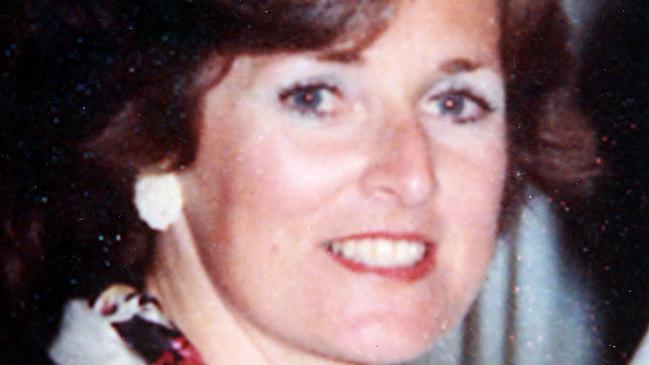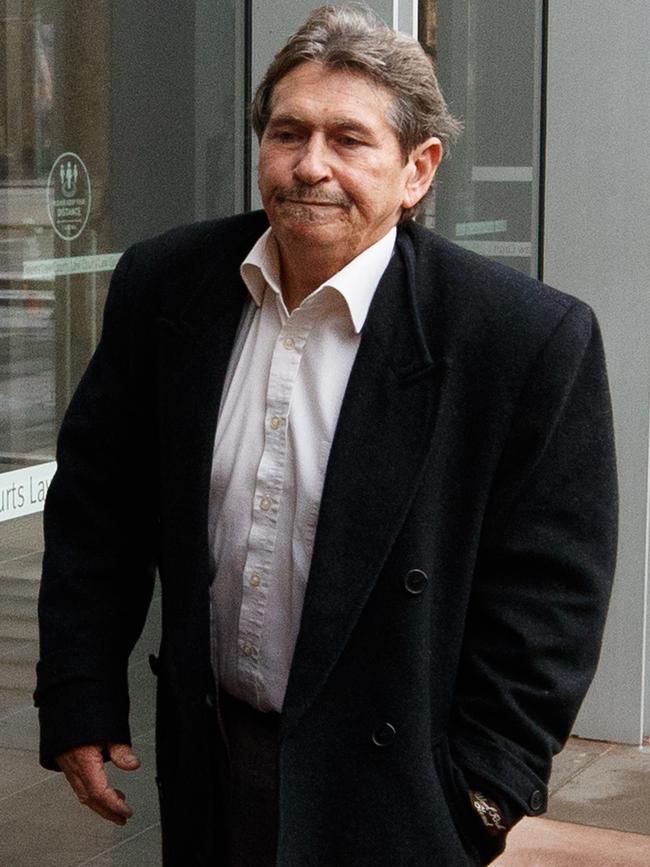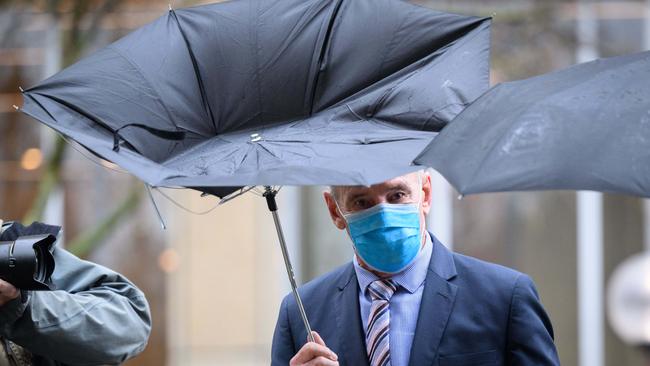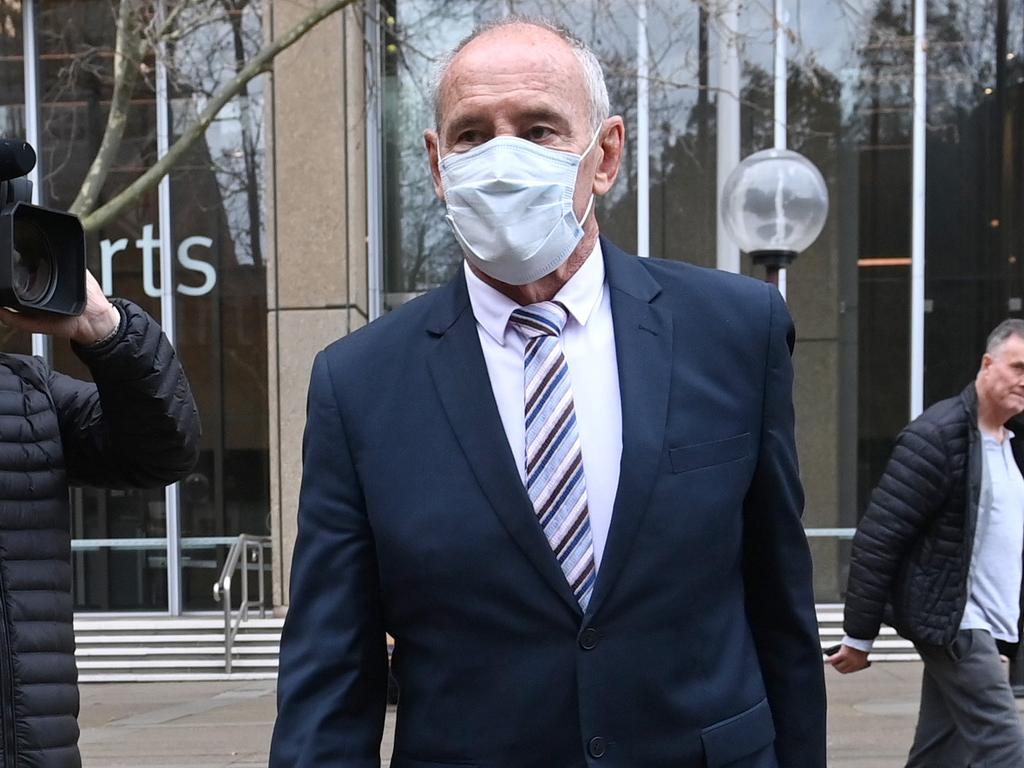‘Loathing and infatuation’ behind Lyn Dawson’s murder, court told
Chris Dawson’s ‘utter infatuation’ with a teenage girl drove him to murder the devoted mother of his two young girls, court hears.

Chris Dawson’s loathing of his first wife, Lynette, and “utter infatuation” with a teenage girl drove him to murder the devoted mother of his two young girls, the NSW Supreme Court has been told.
The former teacher and rugby league footballer’s alleged litany of violent, abusive and hostile behaviour towards Lyn before she vanished 40 years ago was detailed in prosecutor Craig Everson SC’s closing address at his murder trial on Monday.
“He wants out with the old and in with the new,” Mr Everson said.
“He wants Lynette Dawson gone from the picture so he can pursue his relationship with the teenage girl that he became obsessed with.”
Mr Dawson killed his wife as a “cost-free” way of getting rid of her to be with his former student, JC, the family’s babysitter, Mr Everson said.
The prosecutor’s closing address began after Mr Dawson, 73, declined to give evidence in his own defence.
Defence counsel Pauline David instead called a single witness, Paul Cooper, who claims he saw Lyn sitting in a pub at Warners Bay in Lake Macquarie in 1982 after she went missing.
Mr Cooper, 60, said he did not know Lyn but recognised her from images he saw of her on TV program A Current Affair a couple of years ago.
The prosecutor dismissed the claim as completely unreliable.
“She was an attractive lady, you know, she was well presented,” Mr Cooper said. “Just wasn’t the normal clientele you get in the place sort of thing ... She made an impression on me.”
Mr Cooper said the woman had “left her husband” and was “working up the courage” to go to see her sister. He told her people would think her husband “knocked her off” if she didn’t go home.
He also said the woman asked his help to book a motel.
Cross-examined by the prosecutor, he said he was using cannabis and heroin in the 80s, developed a drug dependency and had been to jail.
Lyn, 33, was a nurse working at a childcare centre when she disappeared from her home in Bayview on Sydney’s northern beaches in January 1982.

Since then, she has not spoken to anyone in her close-knit family or her many friends.
Her husband, Chris, has said in various accounts that he is the exception – that she phoned him to say she needed some time away, then didn’t return.
In one phone call of Mr Dawson’s intercepted by police and played at the trial, he said his marriage to Lyn simply broke up and she took off.
“We say that, as an innocent explanation for Lynette Dawson‘s disappearance, puts such an incredible strain on human experience because it is so very unbelievable,” Mr Everson said. “It puts an incredible strain on human experience to accept as a reasonable possibility that the accused’s evident desire to install his teenage lover as his de facto wife and the mother to his children was fulfilled by the completely fortuitous and cost-free disappearance of the wife he loathed.
“The crown seeks to persuade this court that when Lynette Dawson vanished, it was because she was murdered by the accused either alone or with the assistance of another person.”
Lyn Dawson was so unlikely to have left her two daughters, never to contact them again, that it was compelling evidence of her husband’s guilt, he said.
Over the past eight weeks, family members and friends have detailed at the trial Lyn’s love and devotion to the two little girls, aged 4 and 2 when she went missing.
Lyn had been desperate to have children, undergoing surgery after initially being unable to fall pregnant.
She was “keenly anticipating” her eldest daughter’s first day at school when she vanished.
Mr Everson said there were examples in history of mothers abandoning their children. “In the case of Lynette Dawson, that is an inherently improbable position,” he said.
Judge Ian Harrison SC said Chris Dawson’s older brother Peter had given a description that was on one view less generous, describing Lyn as “competent”.
Mr Everson said: “It flies in the face of the other evidence that is before the court. It wasn’t an observation of what he saw, it was an opinion.”
Chris Dawson’s desire to be with JC was a “very strong” motive to murder his wife, he said. Motive two was his deep animosity for Lyn.
Motive three was his determination to avoid the adverse financial consequences and custody issues from a divorce.
Mr Everson said the crown must “and we assert can” show beyond reasonable doubt that Lyn died on or about Friday January 8, 1982.
Justice Harrison asked what period that included.
Mr Everson said it was some time between when Lyn’s mother, Helena Simms, spoke to her on the phone on the Friday night and when Chris Dawson turned up to work as a lifeguard at the Northbridge Baths at noon the following day.

Claims aired during the trial that Lyn could have been alive after that time deserved close attention, he said.
There were three parts to these claims.
First, there was what the accused told others about being telephoned by Lyn on and after that date.
Mr Everson said no one witnessed these calls, and Mr Dawson’s accounts about when he received them had varied widely.
Second, there was what the accused told others about Lyn using her bank card to make purchases after that date.
Mr Everson said these purchases, if they existed, could be explained – for instance through a delay in processing a transaction.
Third, there were people who claim they saw Lyn alive in 1982, 1983, and 1984.
“The crown contends that in all the circumstances, each of the alleged sightings are unreliable,” Mr Everson said.
The one exception was the sole defence witness, who Mr Everson said should be discounted.
Mr Everson has begun addressing claims by the defence of “contamination” of witnesses through the podcast series The Teacher’s Pet.
He said witnesses had given evidence long before the series.







